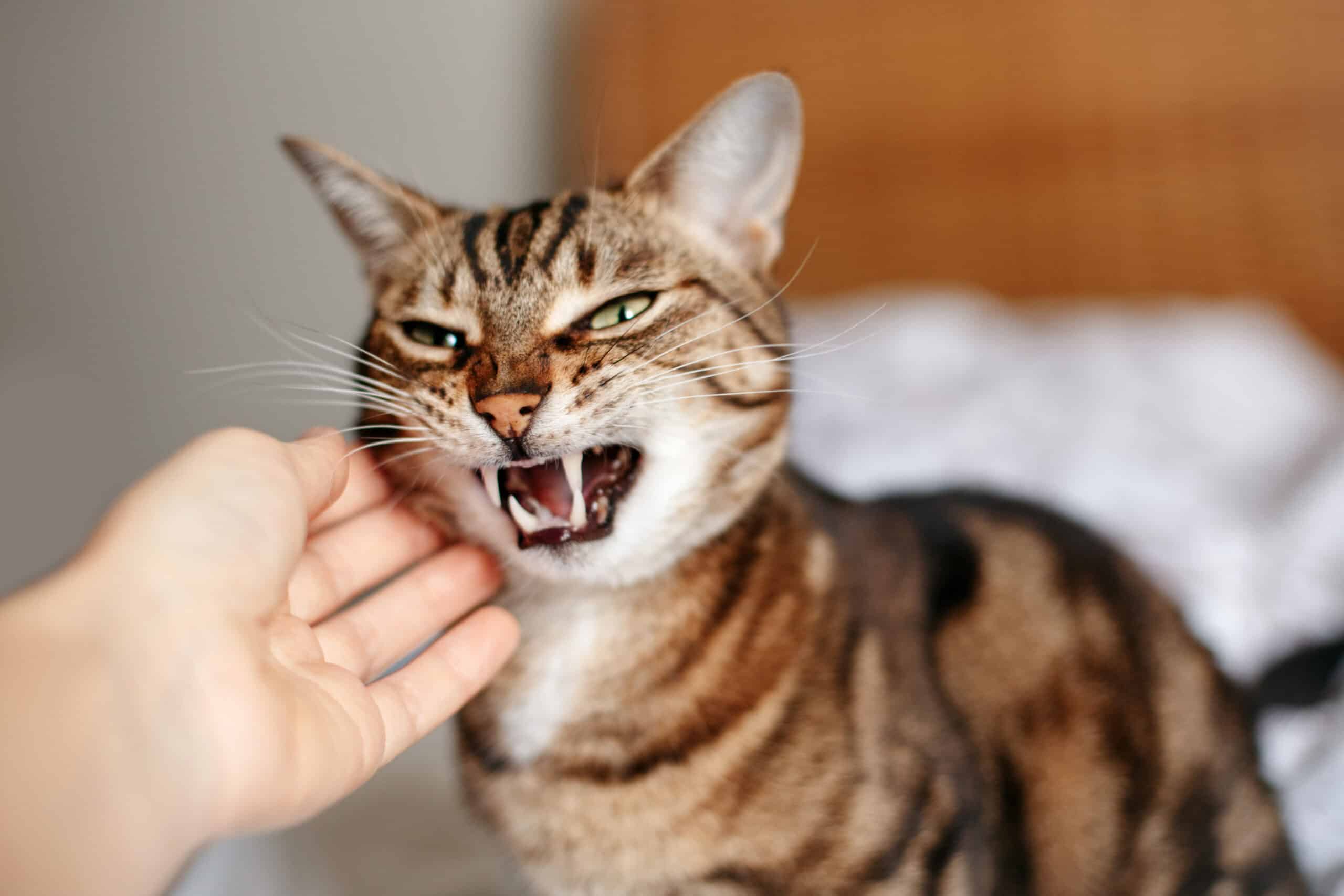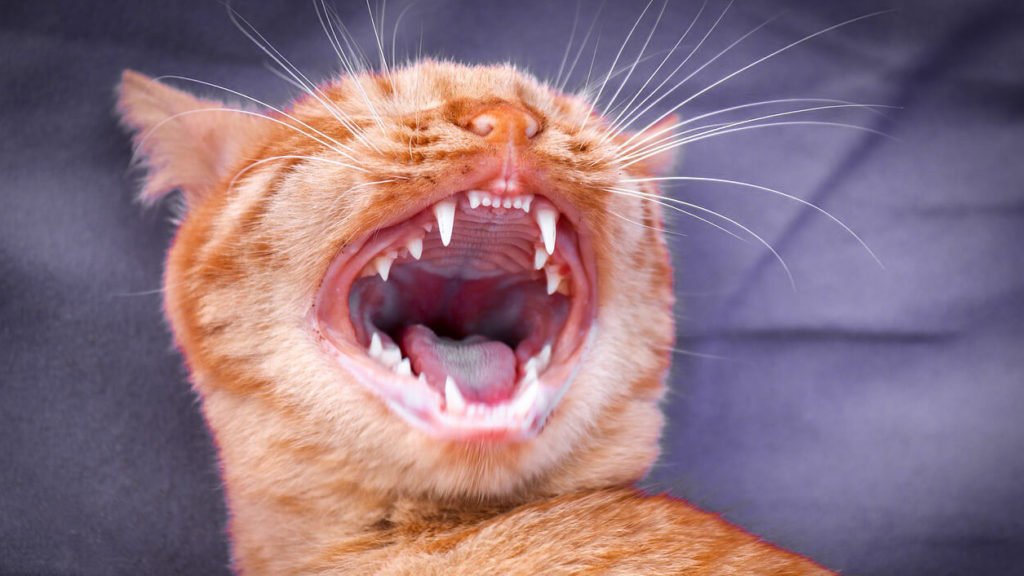Table Of Content

With practice and positive reinforcement, it doesn't need to be as scary as it sounds (for you or your kitty). Imagine how your teeth would look and feel if you didn’t brush them daily. Bad breath and stained teeth are unappealing, but many pet owners aren’t aware that these may be symptoms of serious gum disease. Unless you are regularly providing some form of dental care for your pet, you are neglecting an important factor in their overall health. Paleontologists studying these fossils have been stumped by why the adult animals with two canines that are more like thin-bladed knives avoided breaking them. During periods of food scarcity, saber-toothed cats broke their teeth more often than they did during times of plenty, potentially due to altered feeding strategies and eating rocks.
Regular dental visits and tooth brushing will protect your kitty’s dental health.
The saber-toothed cat (Smilodon fatalis) is probably the most well-known species at the La Brea Tar Pits, and is also the California state fossil. More than 2,500 saber-toothed cats have been excavated from the La Brea Tar Pits and studied at the Museum. Visitors can watch a life-size saber-toothed cat come to life in Ice Age Encounters, a dynamic multimedia performance that uncovers the mysteries of the extinct creatures that roamed Ice Age Los Angeles over 10,000 years ago. The saber-toothed cat puppet is a collaboration between the La Brea Tar Pits Museum and the innovators at Jim Henson’s Creature Shop, whose many film and TV credits include the Muppets and Where the Wild Things Are.
Feline Dental Disease
Your veterinarian can guide you in creating an appropriate schedule based on your cat’s individual needs. Adult cats typically have 30 teeth, comprising incisors, canines, premolars, and molars.1 The variety in tooth types allows for the efficient processing of different types of food in their diet. This number is very close to humans, who usually have 32 teeth as adults. In addition to feeding your cat a complete and balanced diet, Kornreich recommends establishing a dental care routine at home. These painful “cat cavities” occur at or below the gum line and are the result of tooth resorption, not decay.
How to care for your cat's teeth
Gingivitis is a condition in which the gums around the teeth become inflamed (red, swollen, and painful). This inflammation is usually the result of a process that begins with the buildup of plaque, a film that harbors bacteria, on the teeth. In cats with good oral health, the bacteria that live in this film are believed to be beneficial, and the plaque that harbors them accumulates above the line where the base of the teeth meets the gums (gingiva).
Booking Dental Appointment
Periodontitis is almost always the result of untreated gingivitis, so controlling this inciting process is crucial. If necessary, some teeth may be extracted during the dental cleaning. This procedure is done under general anesthesia, and it involves using special instruments to remove calculus from teeth that are healthy enough to stay and removing the crown and root of teeth that are too diseased to keep. Appropriate medications to reduce infection and inflammation may be prescribed following the procedure.
In many cases, dental disease causes a cat to stop eating, which leads to a variety of health problems. Recognizing the signs of dental problems in cats is essential for timely intervention. Some common indications include bad breath, excessive drooling, difficulty chewing, pawing at the mouth, bleeding or inflamed gums, and visible tartar or plaque buildup. Cats may also display behavioral changes, such as decreased appetite or increased irritability, due to oral discomfort.
Understanding feline dental anatomy is essential for providing proper dental care and maintaining the overall health of cats. With 30 teeth, including incisors, canines, and specialized premolars and molars, cats are well-equipped for their carnivorous diet. Regular dental care, including tooth brushing and professional cleanings, can help prevent common dental issues such as periodontal disease and tooth decay. By paying attention to the signs of dental problems and taking proactive measures, pet owners can ensure their feline companions have healthy teeth and gums, leading to a happy and healthy life.
Molars
Cats are obligate carnivores, although pet cats consume a lot of plant material if they are fed dry cat food. None of the teeth of cats, including their molars, have grinding surfaces; they clearly evolved to eat "meat". Dogs also are carnivores, but do have grinding surfaces on their molar teeth. Dr. Cathy Barnette is a small animal veterinarian with 13 years of clinical experience. She currently splits her time between part-time clinical practice and freelance writing, as well as serving on her county Board of Health. Her primary medical interests are preventive medicine and client education.
The special relationship between cats and humans is as old as civilization and stretches back more than 9,500 years. Cats have figured in the history of many nations, were worshiped as gods, and continue to be a favorite subject of artists and writers. Book an appointment at our location or schedule a house-call visit and we’ll clean your pet’s teeth in the comfort of your home. The risk of having your pet’s teeth cleaned by an uneducated layperson with little or no formal training, and outside of a veterinary hospital, could be hazardous and even fatal for your pet.
Like us, cats have different types of teeth and each plays a different role in survival. Cats don’t have any flat grinding surfaces on their teeth like humans do, so they can’t get cavities. However, their teeth are prone to a particular condition known as resorption, which is very common in cats. Dr. Hanie Elfenbein is a veterinarian whose medical philosophy centers around the pet as part of the family and working within that relationship to resolve medical issues and strengthen the human-animal bond. She shares her home with Loki, a "Heinz 57" dog she adopted in 2017. Loki goes to work with Dr. Elfenbein at her veterinary clinic, where he sits on anyone's lap who sits down (he's 50 pounds) and is the official taste-tester of all lunches.

If you're prepared to go all-out to help your cat keep its teeth healthy and strong, however, it's time to think about brushing its teeth. This may seem like a hair-raising proposition (both for you and your cat), but if you go about it the right way, it'll keep your furball's teeth and gums in tip-top shape. To learn all about it, see out vet's guide on how to brush your cat's teeth. For cats their teeth – alongside their claws – are essential tools for catching and killing prey, as well as for eating, but on the whole we don't really see a lot of them. Cats tend to keep their mouths firmly closed a lot of the time, and we're most likely to catch a glimpse of their teeth (in particular their fangs) when they're having a good yawn. Whatever you and your feline friend can or cannot conquer at home, Meyers and Landy say routine dental checkups are a must.
Woman Gets Surprised When Her Rescue Cat Turned Out to Be A “Vampire” - Bored Panda
Woman Gets Surprised When Her Rescue Cat Turned Out to Be A “Vampire”.
Posted: Sun, 13 Nov 2016 08:00:00 GMT [source]
Be on the lookout for symptoms such as excessive drool, bad breath, blood-tinged saliva, preference for wet food, or loss of appetite. Owning, or even caring for stray and feral cats, can be a very rewarding experience, but it does come with certain responsibilities. You need to provide your feline friends with food, water, and a warm and safe environment. While many owners keep their cats as indoor cats, others choose to give them the run of the outside world. If you do let your cat out, offering it a safe and secure spot of its own can greatly improve its outdoor living experience. Whether you’re looking to provide a shelter for your pets when they’re outdoors, or somewhere cozy for regular stray visitors, a cat house provides sanctuary.
No comments:
Post a Comment